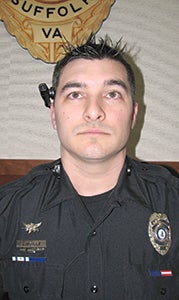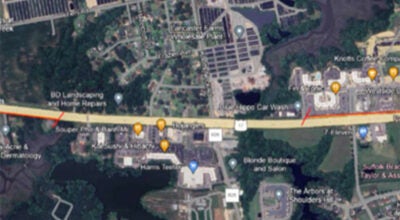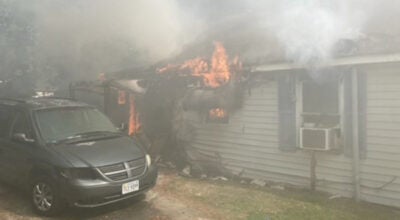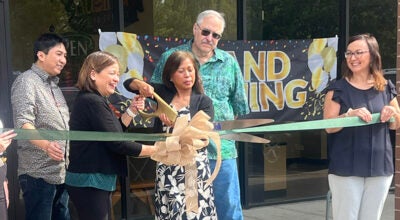Police getting cameras
Published 9:18 pm Monday, April 27, 2015
Suffolk citizens will start noticing something different about their police officers in the coming months.
Beginning after training in June, all Suffolk Police officers will be wearing body cameras while on their shifts. Already, four officers are wearing them as a test.

Suffolk Police Officer Ryan Linville models one of the police department’s new body cameras, mounted near his right ear.
“Body cameras provide a lot of benefits,” Police Chief Thomas Bennett said in an April 15 City Council work session. “They adjust people’s behavior, and I mean everybody. This includes our officers; this includes our citizens.”
The issue of body cameras became a nationwide discussion last August, after a white police officer fatally shot a young black man in Ferguson, Mo. Some witness accounts differed from the officer’s account, and the situation led to riots, the consideration of charges against the officer and a lawsuit.
Many say the dispute over what happened could have been avoided if the officer had been wearing a body camera.
“Cameras accurately depict what occurs,” Bennett said in the work session. “Cameras don’t lie.”
The police department had considered body cameras previously and even got some test models from the Virginia Municipal League four years ago. But Bennett said he was not pleased with the video quality, especially in nighttime recordings, so they were shelved.
Those cameras, however, became essential in getting the new cameras. They traded the old cameras for the new ones and saved the entire acquisition cost — about $72,000, Bennett said.
Enough cameras have been ordered for all patrol officers, Neighborhood Enforcement Team members, school resource officers and supervisors to receive them, Bennett said. The annual cost of the cameras is about $99,000 and includes data storage, repairs, updates and equipment replacement every three years.
Bennett showed three test videos of simulated police events — a nighttime building search, a traffic stop and a chat with a suspicious person. The video is “crystal clear,” Bennett said. “You can almost read the computer screen,” referring to the one seen on an in-car computer during the traffic stop video.
Officers will have the choice of where to wear the cameras on their body. The cameras can attach in three locations — on a pair of specially made eyeglass frames, on a headband near the officer’s ear, or on a hook attached to the shirt collar.
The cameras are operated by a battery pack that is good for 12 hours. The officer wearing the camera will have to turn it on when conducting law enforcement activities, such as a traffic stop or foot chase. Operating the cameras constantly would produce too much pointless video (about a third of the police department’s fleet has in-car cameras, as well) and cause privacy concerns — for example, in restrooms, hospitals and private homes.
“If we’re coming in your house because somebody’s been shot, we’re going to have the camera on,” Bennett explained. But likely not “if we’re coming to talk about your kid’s misbehavior at the park.”
Officers will be responsible for connecting their camera at the end of the night to charge and download data. They will tag any video that is evidentiary in nature, which will be kept indefinitely. Video that turns out not to be needed will be deleted after 30 days, Bennett said.
“There’s no need to keep it if it’s not evidence,” he said. Random audits of videos will be conducted to ensure the system is being used properly.
The video from the four officers currently testing the cameras is being used all the way through the system, including in court cases, to work out any kinks. The city’s prosecutors are working closely with the police department, Bennett said, and an informational session for local judges also was held.
Bennett said officers will be visiting civic leagues and other gatherings to do “show and tell” with the new cameras and answer citizens’ questions.
“It shouldn’t be a surprise to anybody when they see it,” he said.






